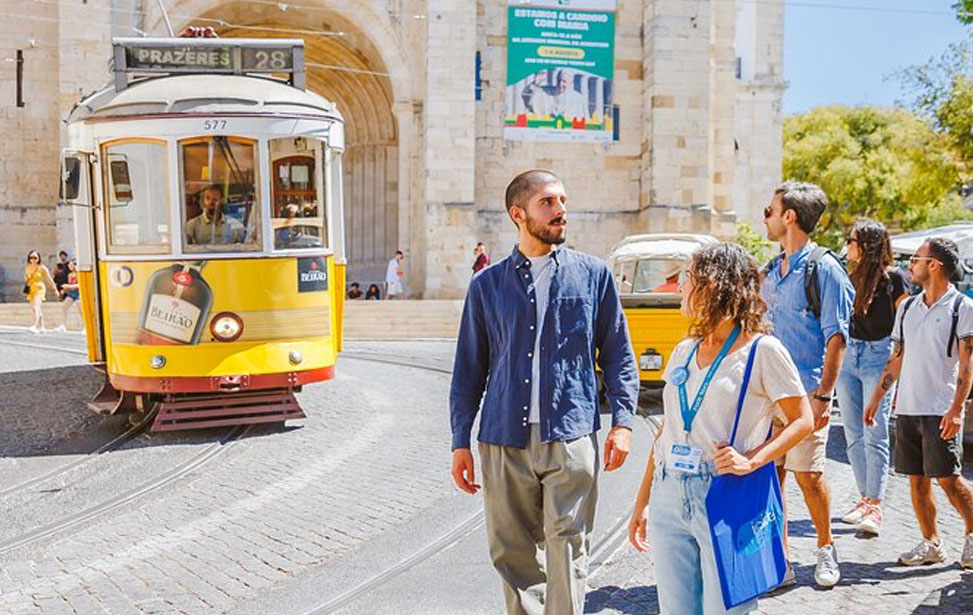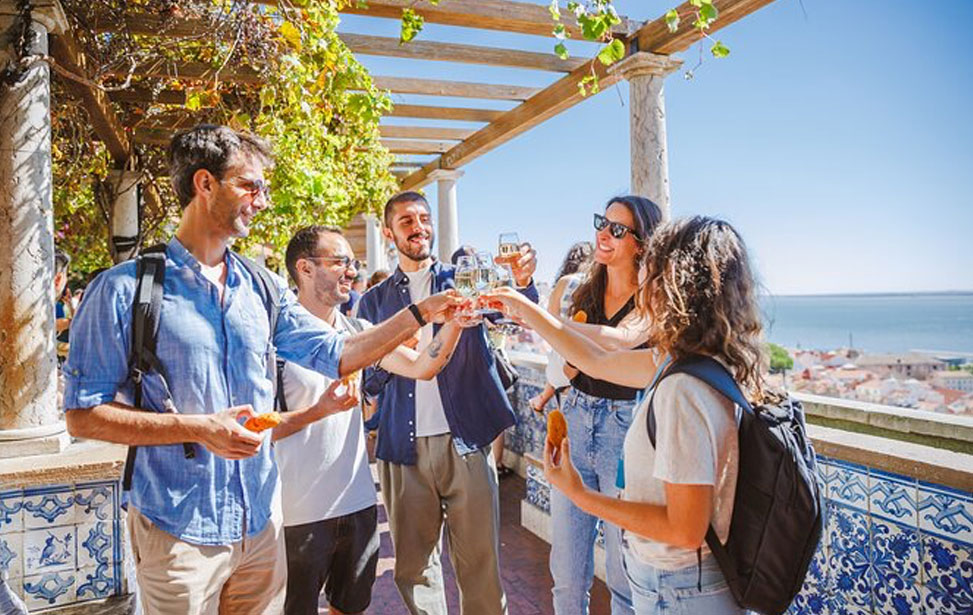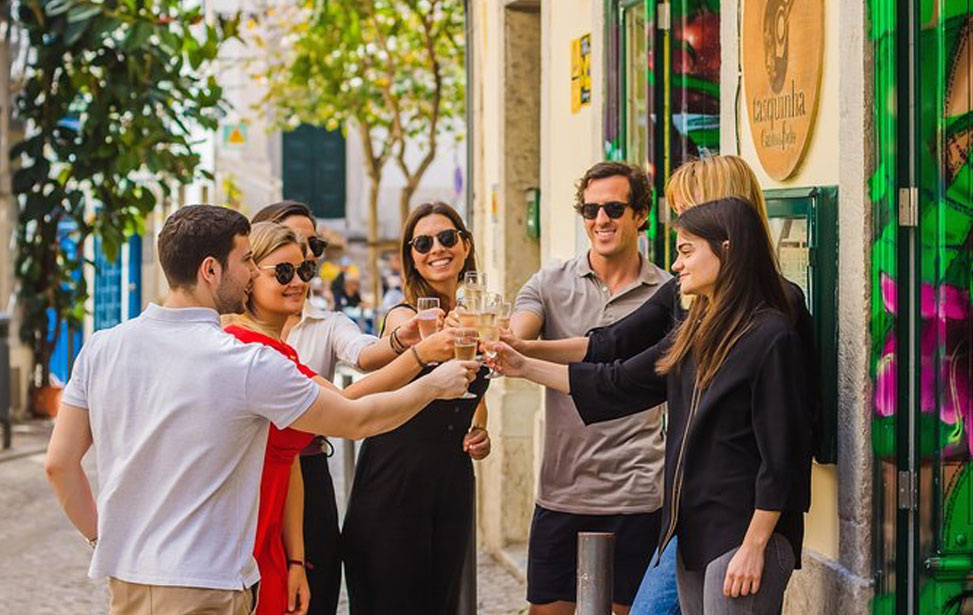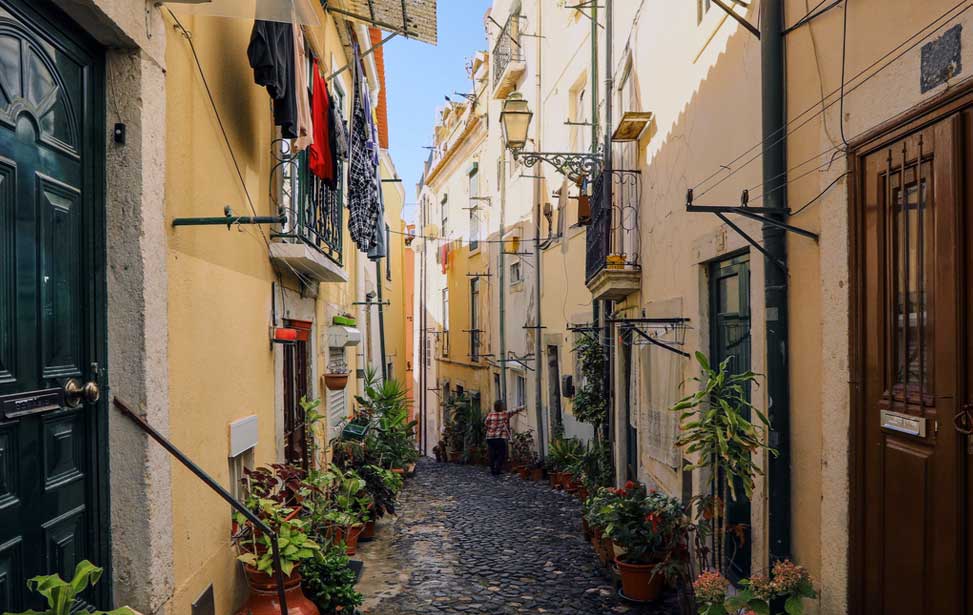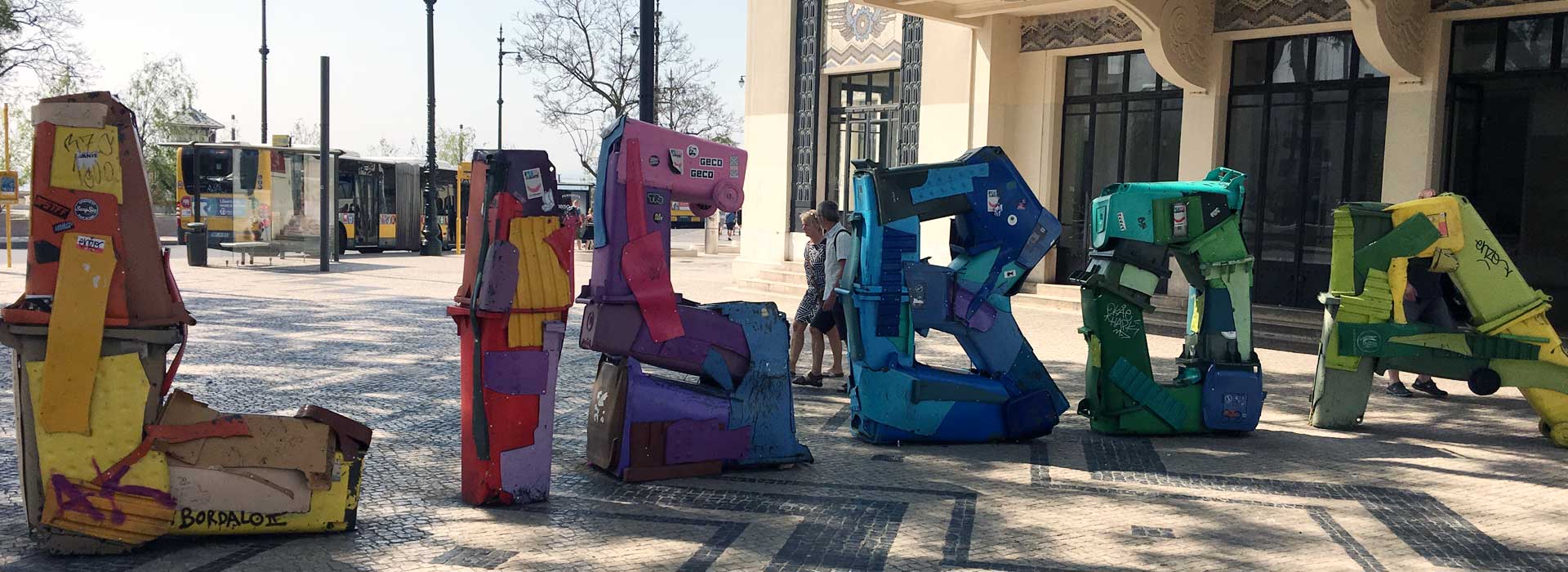
Walking in Lisbon
Lisbon is one of Europe's smallest capitals and many of its most famous monuments are within walking distance from each other. Doing lots of walking seems to occur without a second thought. The abundance of great places to stop to enjoy a coffee and pastry along the way helps you to keep up energy levels. Lisbon's paths are made from cobbled marble that, at times, can be worn smooth to a slippery patina whilst loose uplifted cobbles can be a little hazardous. Comfortable walking shoes are a must - you will walk more than you first intended. You can always take advantage of the numerous old trams and funiculars as this is part of the Lisbon experience. Another great way to discover Lisbon on foot is by joining a small walking tour with a knowledgeable local guide. Let MADABOUTLISBON.COM show you the options best suited to you.
BAIXA
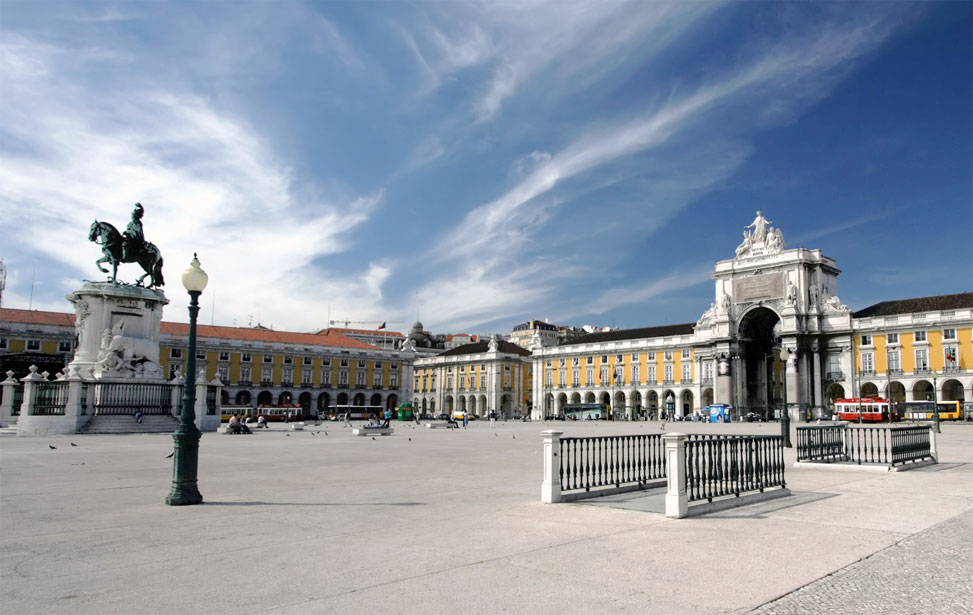
Praça do Comércio
Within the Baixa district you'll find attractions such as the Elevador de Santa Justa, the famous cast-iron street lift. The pretty Rossio Square which makes a great place sit outside a café and people watch. A smaller square, the Praça da Figueira is where you'll find a transport hub. From the Baixa downtown district you can take a funicular to either the Bairro Alto on the eastern hill or the Tram #28 up to the Alfama via the Graça district and Lisbon's castle (castelo). [ More About the Baixa ► ]
THE WATERFRONT
Between Comércio Square and the Cais do Sodré is a lawned area. Since renovation in 2013 Ribeira da Naus has become a place to hang out during warm days and is especially popular at sunset. Beyond Cais do Sodré is the Jardim Roque Gameiro square. This area is home to former warehouses transformed into trendy eateries and an ideal spot to relax whilst relishing the river views. About halfway is the fashionable Docas de Santo Amaro district in Alcântara, under the shadow of the 25 de Abril bridge. This marina sports great restaurants and is a departure point for many river cruises.
Once past the MAAT and Electricity Museum, you arrive at Belém and its major attractions, such as the Monument to the Discoveries (Padrão dos Descobrimentos), Belém Tower (Torre de Belém), the mighty Mosteiro dos Jerónimos monastery and the National Coach Museum.
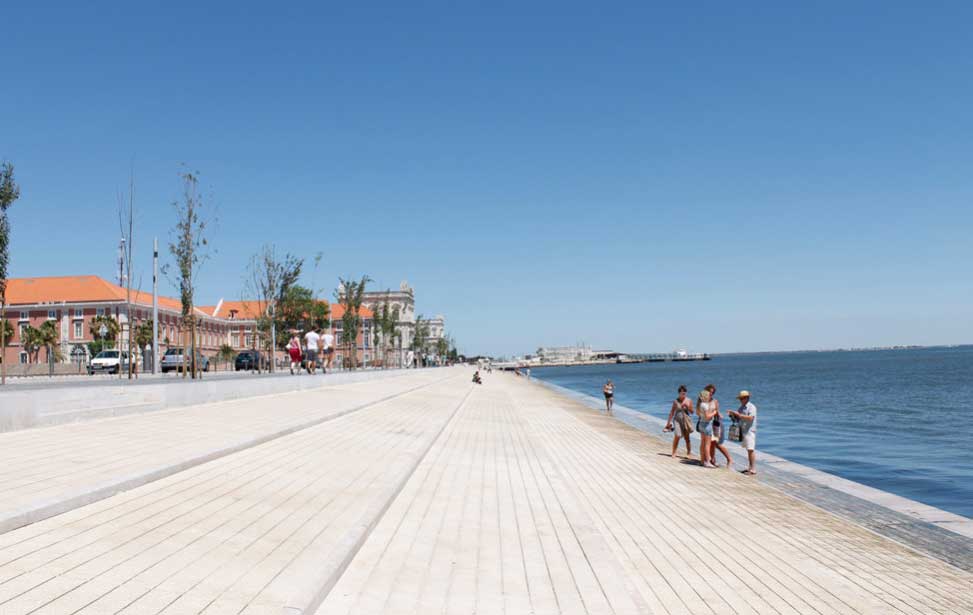
Avenida Ribeira das Naus


 Lisbon Card Discounts
Lisbon Card Discounts


